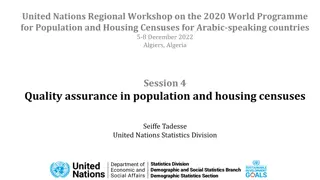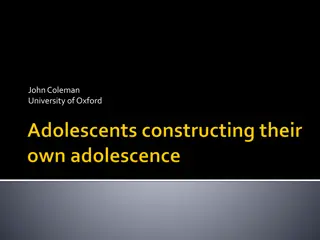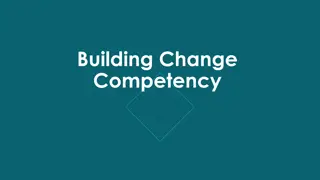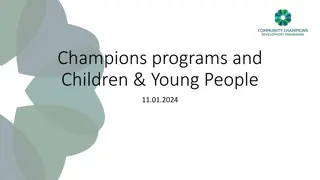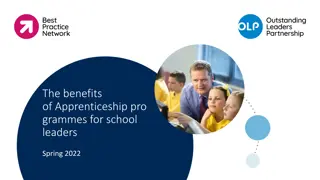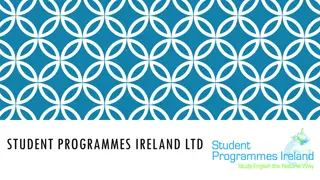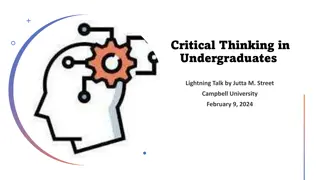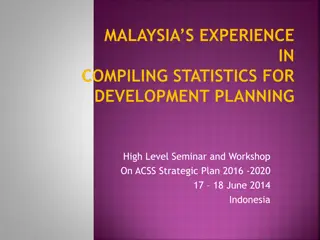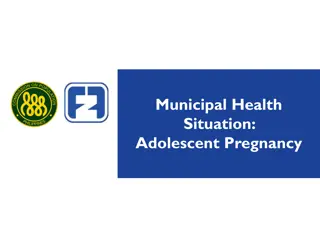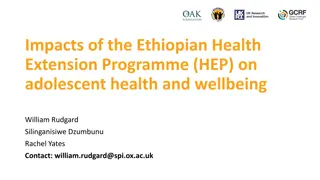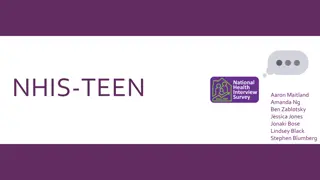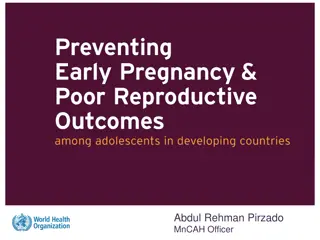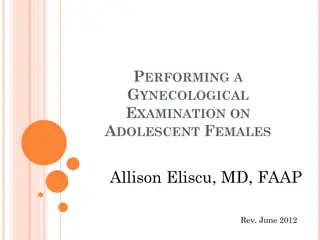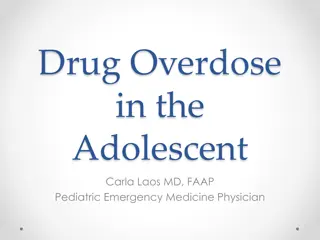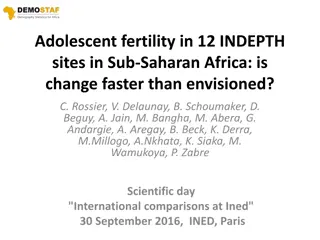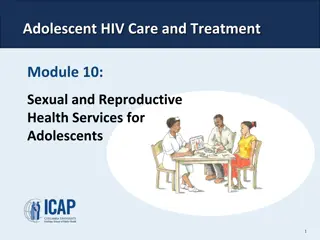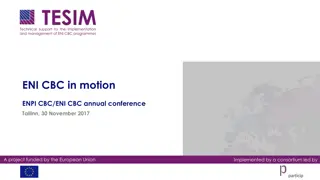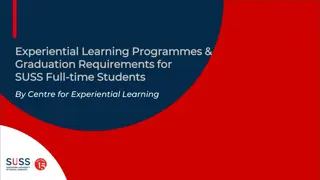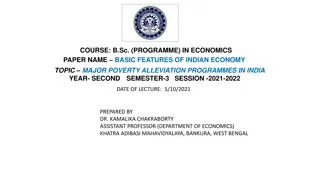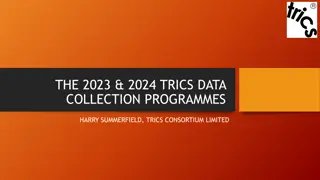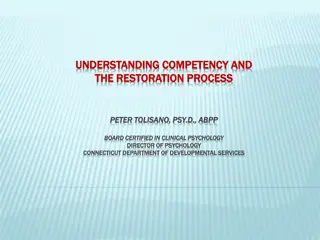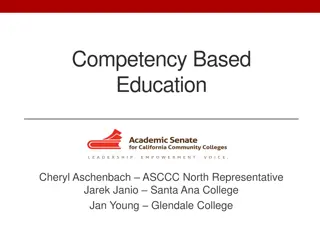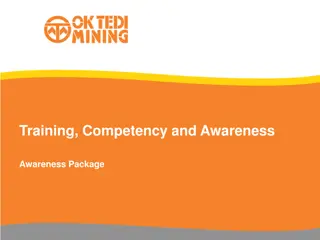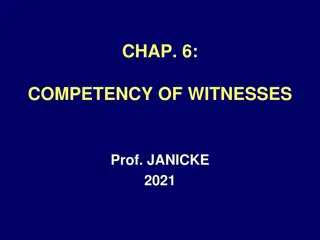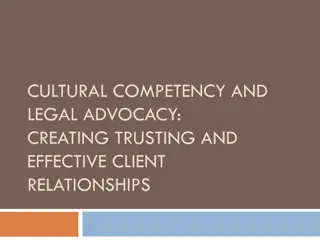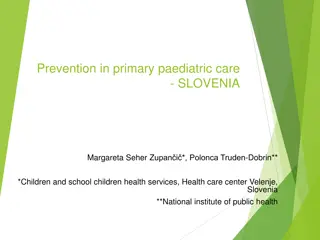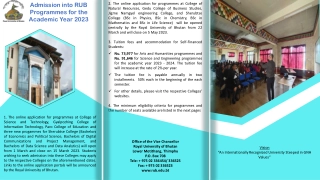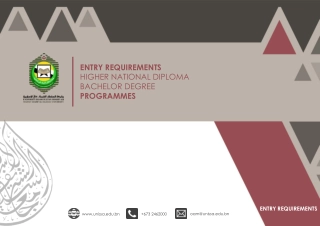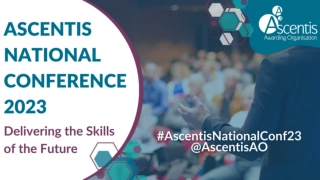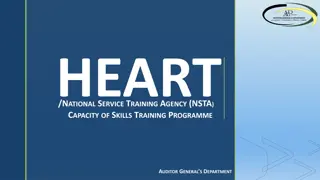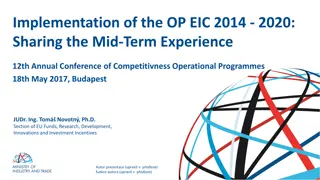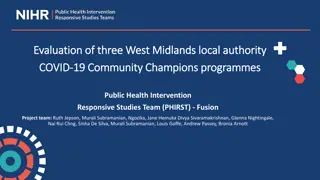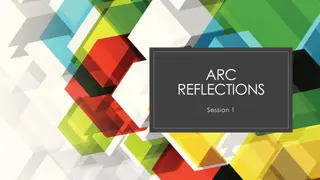Strengthening Adolescent Programmes through Competency Development
Explore how the Adolescent Kit can enhance programmes for adolescents, such as Keeping Children Happy in a refugee camp. Learn how to focus on competency outcomes, set goals collaboratively, and develop key competencies to support adolescent development effectively.
Uploaded on Oct 01, 2024 | 0 Views
Download Presentation

Please find below an Image/Link to download the presentation.
The content on the website is provided AS IS for your information and personal use only. It may not be sold, licensed, or shared on other websites without obtaining consent from the author. Download presentation by click this link. If you encounter any issues during the download, it is possible that the publisher has removed the file from their server.
E N D
Presentation Transcript
Understanding and using the kit: Training of trainers for facilitators Module 5: Implementation and roll-out planning: The Adolescent Development and Participation Preparing to use the Adolescent Kit through your Section programmes Priya Marwah, Adolescents in Emergencies and Peacebuilding Specialist Ellen Fransen, Programme Assistant Juliet Young, Consultant
5.1 Using the Adolescent Kit for Expression and Innovation to strengthen your programme
Discussion: Sample scenario How could Keeping Children Happy use the Adolescent Kit to strengthen their work with and for adolescents to support their development and use of competencies? Keeping Children Happy (KCH) is an international NGO that organises recreation programmes for children in a refugee camp in Kenya. They have ten Child Centres where around 500 children come regularly. Each centre is managed by two facilitators. Centres are open from 1PM 5PM (because school hours are from 9AM-12PM). Children who come to the centres are between the ages of 6 and 15 years old. The majority are boys. When they come to the centres they can play freely in a safe space. Some of the adolescent boys have organized themselves into small groups to play football, and the girls like to play jump rope.
5.2 Implementation and roll- out: Focusing on competency outcomes for adolescents
Discussion/ planning Which competencies will adolescents in our programme most benefit from developing and using? The Ten Key Competencies
Setting goals for competencies: Strategies and tools Consult and collaborate with stakeholders Consult and collaborate with programme staff, community members, and adolescents Create space for adolescents to formulate their own goals in their Adolescent Circles Refine and clarify goals Review examples of possible goals Map competency outcomes, including knowledge, attitudes and skills Formalize goals Set indicators
5.3 Developing implementation and roll-out plans
Developing (proposed) Action Plans to use the Adolescent Kit for Expression and Innovation in your programme In this session, together we will: Draft a proposed Action Plan that we will share between UNICEF and participating partner organizations Focus on a specific part of our programme(s) in which we will use the Adolescent Kit Focus on how we will use the guidance and activities to make your programme stronger and better for adolescents. Explore whether we will procure Supply Kits to help make activities for adolescents more effective and fun. (Each Supply Kit can be used for up to 50 adolescents, organized into two circles of 25 adolescents each).
Draft Plans: How will we use the Adolescent Kit for Expression and Innovation in our programme? 1. Organization name and your name 2. Programme through which you plan to use the Adolescent Kit 3. How many adolescents would you hope to reach using the Adolescent Kit? Which adolescents? (M/F, ages, other characteristics) 4. Where does your programme implement activities? (Location/s) Remember: Focus specifically on the programme in which you will use the Adolescent Kit. The number of Supply Kits will depend on the number of adolescent participants (1 kit : 50 adolescents)
Draft Plans: How will you use the Adolescent Kit for Expression and Innovation in your programme? 5. What are the activities and goals of the programme in which you would use the Adolescent Kit for Expression and Innovation (including guidance, tools and supplies)? 6. Which guidance materials and tools will you use from the kit? How will these complement or be integrated with the other curricula, guides, manuals or other resources you are using within that programme? 7. How will using the guidance materials and activities strengthen your programmes? What will change or improve for adolescents?
Draft Plans: How will you use the Adolescent Kit for Expression and Innovation in your programme 8. What competencies for adolescents will you focus on in your programme? Explain your choice. 9. Which activity cycles will facilitators use when planning activities for adolescents? Explain your choice. 10. Training Plan Outline How many facilitators will you train? Where and when will you conduct trainings? Describe your training approach e.g. ToT, integrated into facilitator training, in-service trainings
5.3 Procuring and preparing to use supplies
About the Supply Kit The Supply Kit is a set of materials, equipment and supplies that can be used to support activities with adolescents. Each Supply Kit is designed to meet the needs of 50 adolescents and four facilitators.
What is in the Supply Kit, and how do you use the different components?
Discussio n/ Planning Procuring supplies locally In addition to, or instead of the resources in the Supply Kit, what supplies will we procure locally?
Developing plans to manage and use supplies
Action planning Developing plans to manage and use supplies Do our plans reflect all of these good practices? Use your supplies! Take good care of your supplies Store your supplies somewhere safe Keep an inventory Involve adolescents! Get the most out of your supplies Be prepared Replace supplies locally
Evaluation questions 1. What new knowledge, programme resources or other ideas have you gained from this workshop? 2. What ideas, approaches, resources were you already familiar with? 3. Which parts of this workshop should we continue to use when preparing people such as yourselves to use the Adolescent Kit for Expression and Innovation as a resource for programmes? 4. What parts of this workshop should we skip or remove? 5. What parts of this workshop should we have spent more time on, or what should be added? 6. Please freely share any other feedback you have about this workshop what worked well for you, what did not work well for you, and anything else you would like to share with us. Please let us learn from your honest opinion!
Thank you!




